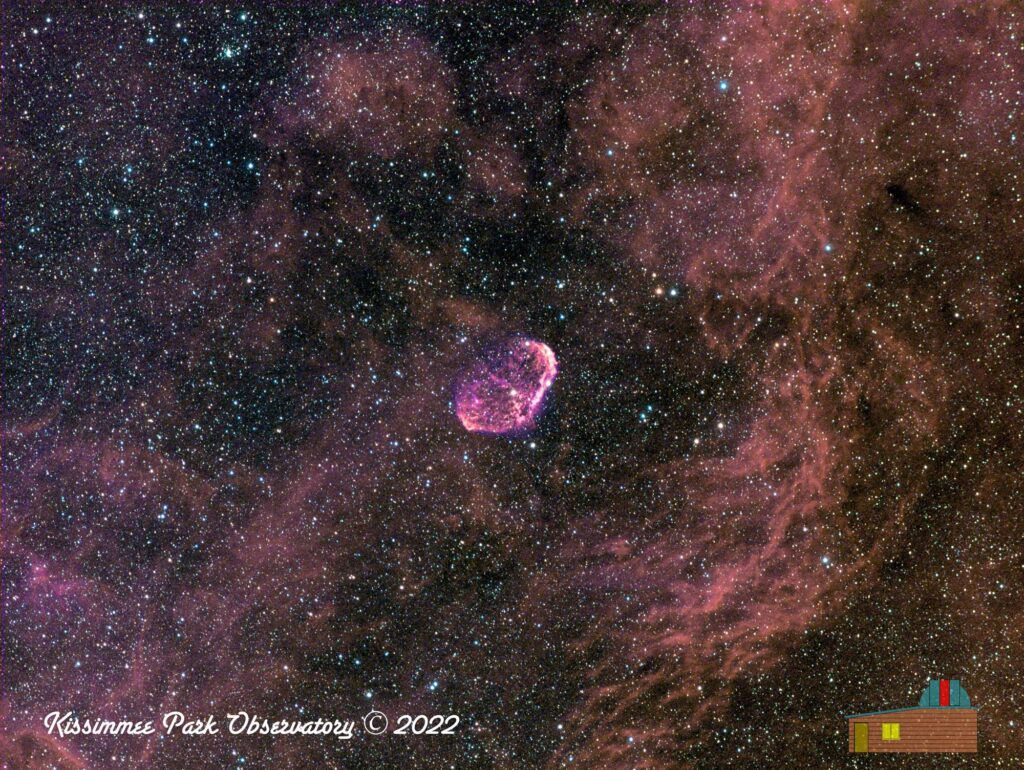This is NGC6888, the Crescent Nebula in the constellation Cygnus. I think it looks more like a brain than a crescent.
The Crescent Nebula (also known as NGC 6888, Caldwell 27, Sharpless 105) is an emission nebula in the constellation Cygnus, about 5000 light-years away from Earth. It is formed by the fast stellar wind from the Wolf-Rayet star WR 136 colliding with and energizing the slower moving wind ejected by the star when it became a red giant around 250,000 years ago. The result of the collision is a shell and two shock waves, one moving outward and one moving inward. (Wikipedia)
This is a HaGO image, meaning Hydrogen Alpha was assigned to Red, Wideband Green was assigned (surprisingly) to Green, and Oxygen III was assigned to Blue.
Click on the image to see a larger version you can explore.
Image Info
- Imaged from the KPO field in Saint Cloud, Florida.
- Camera : ZWO ASI1600MM Pro
- Lens: Canon 100-400 f/5.6L lens, set to 386mm
- Mount: iOptron SmartEQ Pro
- Narrowband Hydrogen Alpha: 12 subframes of 300s = 60 min integration, assigned to Red
- Wideband Green: 5 subframes of 300s = 25 min integration, assigned to Green
- Narrowband Oxygen III: 12 subframes of 300s = 60 min integration, assigned to Blue
- Total integration time: 145 min = 2.4 hours.
- Captured via ASIAir Pro automation
- Optical tracking via ASIAir automation, currently using ST4 mount control via the ASI120MM-S guide camera
- Separate channels stacked and HaGO integrated in Astro Pixel Processor
- Image cropped, stretched, and noise processed in Nebulosity
- Final processing in Aperture

